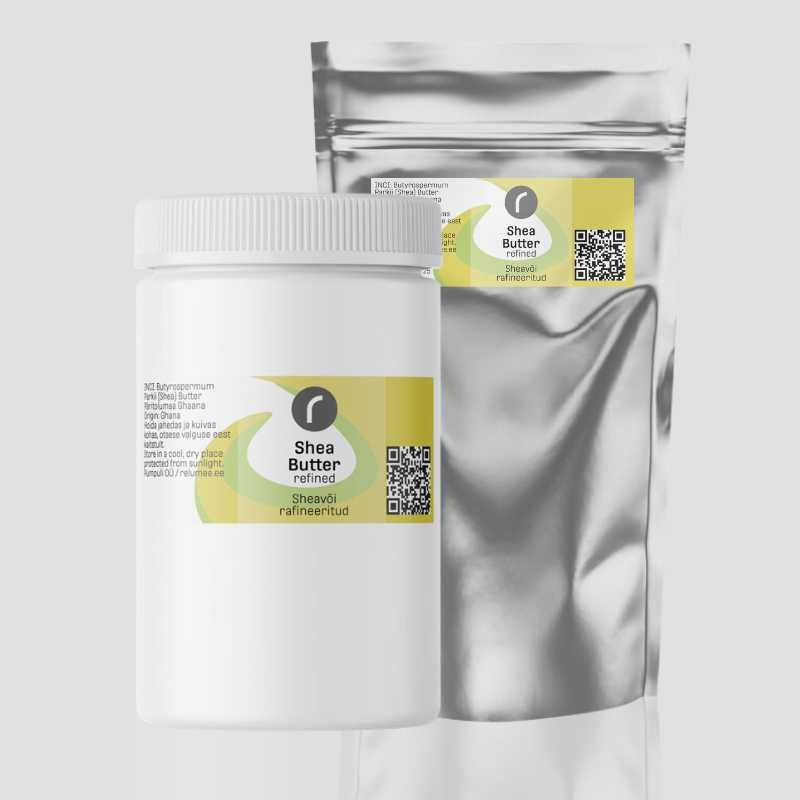




Unit price: €1.35 / 100 g
Shea butter is a moisturizing and well-absorbing skin softening butter that restores skin elasticity. Antioxidants found in fat inhibit and regulate the formation of free radicals. Refined shea butter is light in color and odorless. During refining, the consistency of shea butter becomes more uniform, the specific smell is removed and the color becomes lighter.
Shea butter is a good component for making whipped butter. Whipped shea butter is light and airy, easier to spread than pure shea butter. Butter is also suitable for use in lipstick and lip balm. Shea butter is used in soap because of its high content of stearic acid, which gives the soap its hardness. It forms a dense and small-bubble foam in soap, therefore it is wise to combine shea butter with other fats that improve foaming.
Shea butter is made from the nuts of the shea nut tree that grows in Africa. Relumee shea butter nuts are collected in Ghana by local production cooperatives. Nuts are cleaned, dried in the sun and extracted or pressed in local communities. This gives local women the opportunity to earn a sustainable livelihood for their families. The purification or refining process takes place in Europe. Refined shea butter is light yellow or white in color. During refining, the consistency of shea butter becomes more uniform, the specific smell is removed and the color becomes lighter.
Shea butter can be used as a nourishing cream in its pure form and as a raw material for various cosmetic recipes. Shea butter is the perfect ingredient for making whipped body butter. Its composition is lighter and airier than pure shea butter, and its application is also more comfortable due to its softer texture. When used in oil-in-water creams, shea butter helps to thicken the cream. Also, shea butter is often used as a component in lipstick and lip balm .
Shea butter is widely used in soap because of its high stearic acid content. Stearic acid gives hardness to soap. However, the oleic acid found in shea butter provides moisture. In soap shea butter creates dense and small-bubbled foam, so it must be combined with better foaming fats like coconut oil. The light color of shea butter allows you to make very light colored soap.
1 kg of shea butter is poured into a strong jar with a screw-on lid, which ensures the butter's airtight preservation. You can later use the food-grade jar as a storage jar. The jar made of PP plastic is easy to clean, withstands temperatures of up to 70 degrees and is also easy to recycle. 500 g and 3 kg of shea butter are packed in an airtight foil bag. Shea butter is also available in bulk packaging of 25 kg
Shea butter recipes - 8 recipes
Solid hand cream with shea butter and cocoa butter
Saponification number
Pumice stone - 0.132
Potassium hydroxide - 0.185
Since Melt and pour soap base is already a finished product, shea butter can be used only in a small amount, no more than 20 grams per kg. Adding a large amount of butter reduces the foaming and cleaning properties of the soap. The shea butter added to the soap base does not saponify but remains in the soap as fat.
Data sheet
You might also like